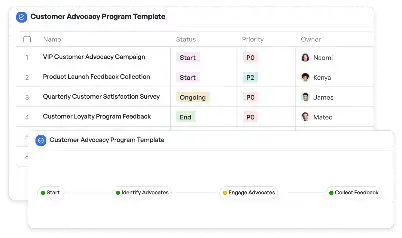Automated Threshold Adjustment
Achieve project success with the Automated Threshold Adjustment today!

What is Automated Threshold Adjustment?
Automated Threshold Adjustment refers to the process of dynamically modifying predefined thresholds in systems or processes based on real-time data and analytics. This concept is particularly significant in industries like finance, healthcare, and IT, where thresholds are used to trigger alerts, actions, or decisions. For instance, in fraud detection systems, thresholds are set to identify unusual transactions. However, static thresholds may fail to adapt to evolving patterns, leading to false positives or missed detections. Automated Threshold Adjustment leverages machine learning and data analytics to continuously refine these thresholds, ensuring optimal performance. By automating this process, organizations can respond to changes more effectively, reduce manual intervention, and enhance decision-making accuracy.
Try this template now
Who is this Automated Threshold Adjustment Template for?
This Automated Threshold Adjustment template is designed for professionals and teams who rely on threshold-based systems to monitor and manage operations. Typical users include data scientists, IT administrators, financial analysts, and operations managers. For example, a data scientist working on a predictive maintenance model can use this template to adjust thresholds for equipment failure alerts. Similarly, an IT administrator managing server loads can benefit from automated adjustments to prevent system overloads. The template is also ideal for financial analysts monitoring stock market trends or healthcare professionals setting alert levels for patient vitals. By catering to these diverse roles, the template ensures that users can implement dynamic threshold adjustments tailored to their specific needs.

Try this template now
Why use this Automated Threshold Adjustment?
The core advantage of using the Automated Threshold Adjustment template lies in its ability to address the limitations of static thresholds. In dynamic environments, static thresholds often lead to inefficiencies, such as false alarms or missed critical events. For instance, in a cybersecurity context, static thresholds might fail to detect sophisticated attacks that evolve over time. This template solves such issues by enabling real-time adjustments based on data patterns and trends. Additionally, it reduces the dependency on manual recalibration, saving time and resources. The template also enhances system resilience by ensuring that thresholds remain relevant and effective, even as conditions change. By leveraging this template, organizations can achieve greater accuracy, responsiveness, and operational efficiency in threshold-based systems.

Try this template now
Get Started with the Automated Threshold Adjustment
Follow these simple steps to get started with Meegle templates:
1. Click 'Get this Free Template Now' to sign up for Meegle.
2. After signing up, you will be redirected to the Automated Threshold Adjustment. Click 'Use this Template' to create a version of this template in your workspace.
3. Customize the workflow and fields of the template to suit your specific needs.
4. Start using the template and experience the full potential of Meegle!
Try this template now
Free forever for teams up to 20!
The world’s #1 visualized project management tool
Powered by the next gen visual workflow engine




